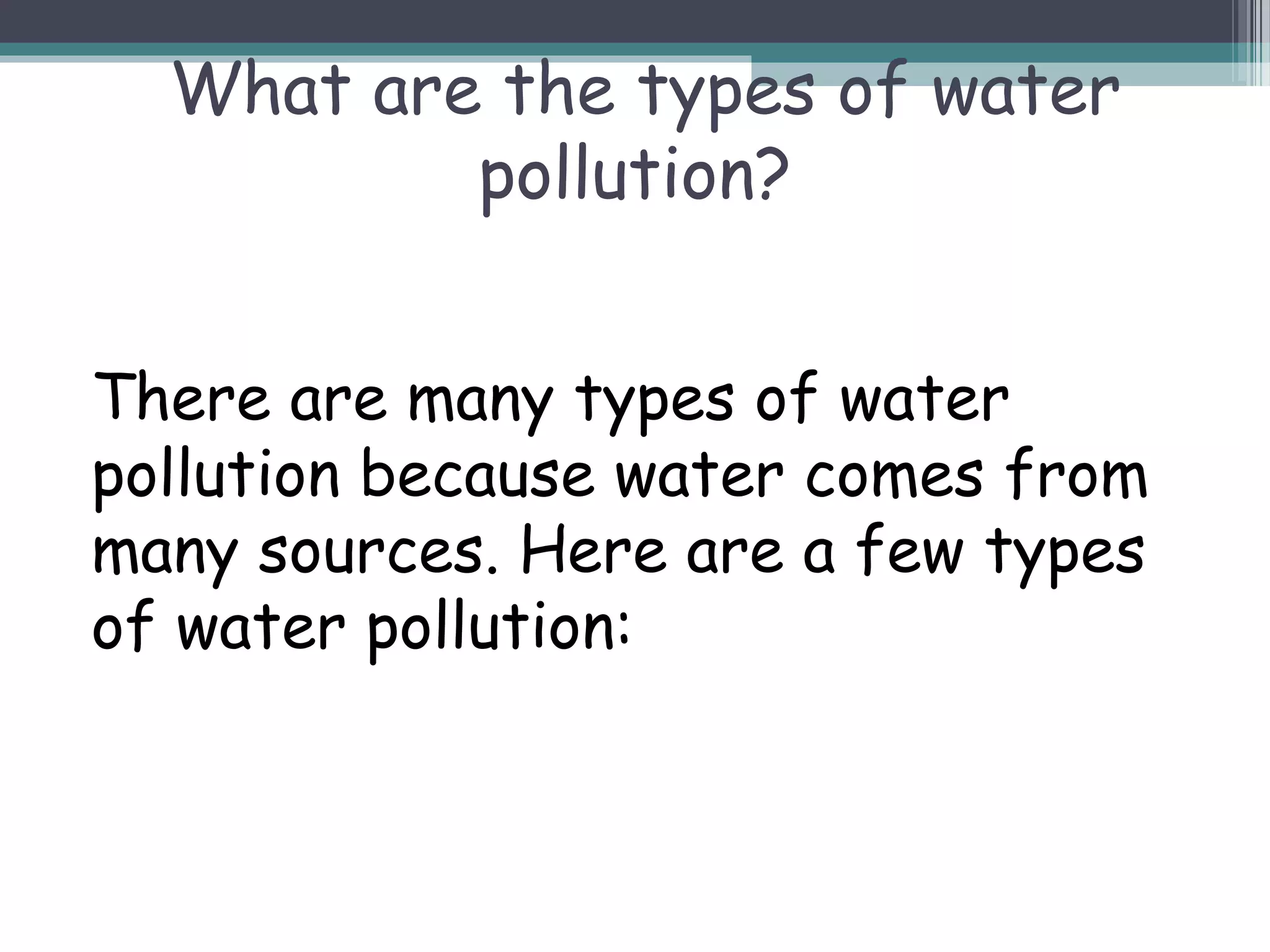This document discusses water pollution, including its causes, sources, types, effects, and methods of prevention. It defines water pollution as the contamination of water bodies by human and natural activities. The two main sources are point source pollution from single identifiable sources like factories, and non-point source pollution from multiple diffuse sources like agricultural runoff. Various types of water pollution are described, and effects include harm to aquatic life, disruption of food chains, diseases in humans, and destruction of ecosystems. Prevention methods center around proper waste disposal, reduced chemical usage, and wastewater treatment.































































